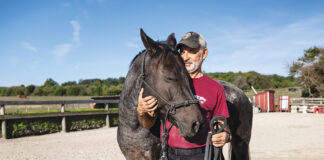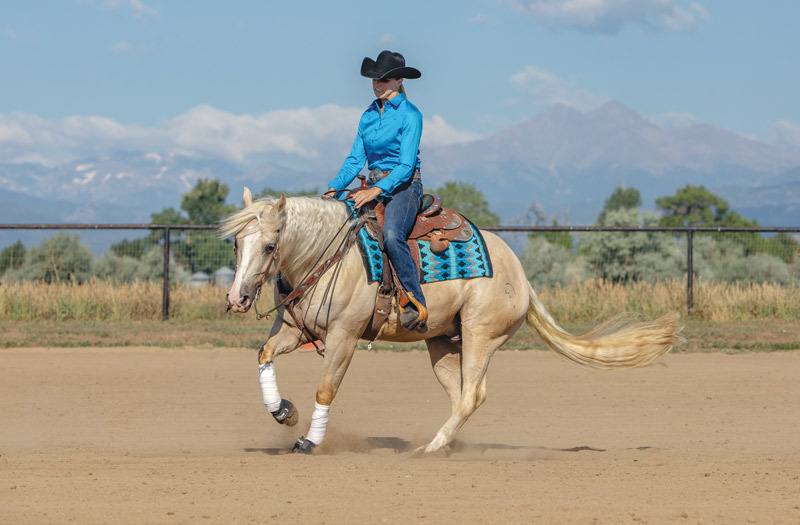
The horse spins to the right, then left, at a reining show. With his full body engaged and his hindquarters carrying his weight, it appears that the spin is a fast turn on the haunches. However, to master this reining move, you’ll teach your horse to move forward into a better reining spin instead of pulling him back.
Here, reining trainer and coach Sharee Schwartzenberger helps you move your horse forward into the spin by spiraling in from a walk. Then she’ll help you end your spins with precision as you change directions.
Schwartzenberger turned pro in 2017 after a lifetime of showing at top National Reining Horse Association (NRHA) and American Quarter Horse Association (AQHA) events. Her freestyle reining performances have earned her top championship titles. She coaches riders and trains reining horses in Longmont, Colo.
Schwartzenberger says that she uses the forward-first drill to teach young horses to spin for the first time. It also helps horses with anxiety. Standing still at the start can cause horses to worry and prance; starting with forward motion takes away the chance to fret.
Outfit your horse with bell boots, polo wraps or splint boots, and even knee boots to protect him during these athletic moves.
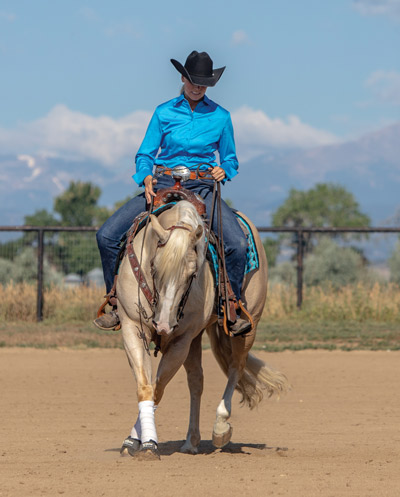
Circle In
At a show, you’ll need to start your spins from a full stop. But for practice, it’s good to remind your horse that a spin includes forward momentum.
Riding with two hands on your split reins, walk your horse in a tight circle. Keep both legs engaged on your horse’s sides so he feels the forward cue. Your horse should move in a small circle to encourage him to step across with his front legs.
When you’re ready to ask for the spin to the left, release your inside (left) leg so that you’re only applying outside (right) leg pressure. You can pick up on your inside rein to help encourage the horse to step to the side. Keep your outside (right) leg active and tap, tap, tap to encourage the movement. Add a verbal cue, such as a clucking noise to encourage a faster pace. Keep your body centered in the saddle and allow the horse to work.
If your horse listens well and responds to your walk-then-spin commands, work at a trot. Trot a small circle, then repeat the cue for the turn. Building up speed will help your horse move at a show-ready spin speed.
If you practice this drill regularly, Schwartzenberger says your horse will look for the cue to spin. The spin becomes a release and is easier than trotting fast circles. Master the drill riding two-handed then with one hand on the reins.
Choose Your Direction
Practice in both directions, but pay more attention to the way your horse needs the most practice. Make sure to practice this drill in between other moves and large loping circles.
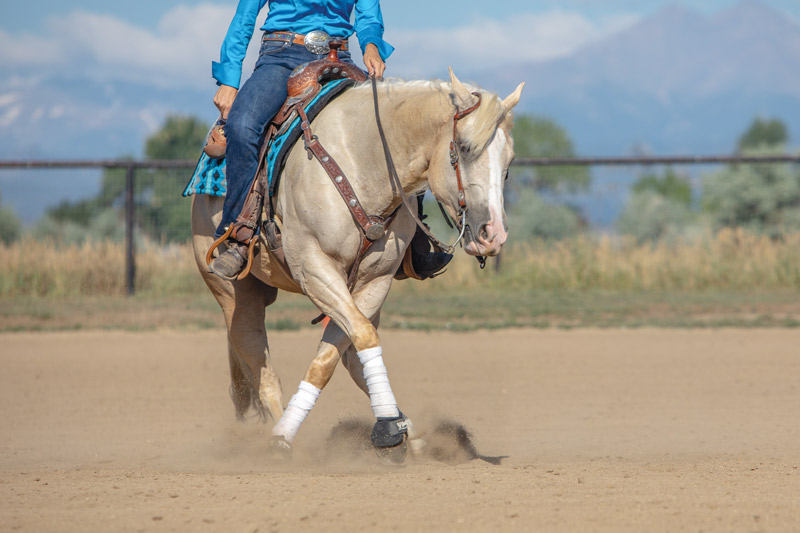
End It
To score well, you’ll need to start and finish your spin with precision. Schwartzenberger says switching directions helps your horse tune in to you and stop in the right place.
Cue your horse into a spin. After a three-quarter turn or one full spin, ask your horse to move in the opposite direction. To change directions, stop your current spin by removing outside leg pressure and raising your hand up. Move your hand toward the direction you want your horse to stop. Then cue for a spin in the opposite direction by removing your inside leg pressure and applying outside leg pressure in the new direction.
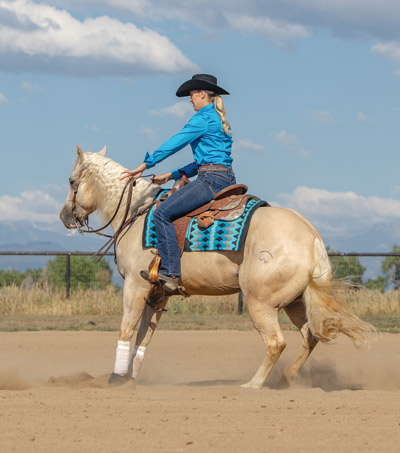
Dizzy Fix
Wait up to 30 seconds after spinning before cueing your horse for something new. Taking a break can allow your horse to catch his breath and regain his footing after the dizzying maneuver.
As you ride, keep your eyes on your horse’s poll and also keep a cone in your peripheral vision. If you keep your eyes on the same plane as the horse, any dizziness should subside.
You’ll need to count your revolutions when you’re in the show arena so that you don’t do too many or too few. Most show patterns call for four to four-and-a-quarter revolutions in each direction. Count the cone each time you go by to make sure you’ll stay on pattern and master your spin.
Special thanks to our horse model, AQHA’s Voodoos Smokin (“Olaf”).
This article about how to perfect your reining spins appeared in the October 2020 issue of Horse Illustrated magazine. Click here to subscribe!




